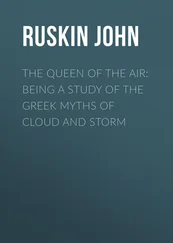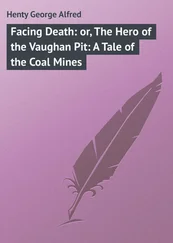George Dodd - The History of the Indian Revolt and of the Expeditions to Persia, China and Japan 1856-7-8
Здесь есть возможность читать онлайн «George Dodd - The History of the Indian Revolt and of the Expeditions to Persia, China and Japan 1856-7-8» — ознакомительный отрывок электронной книги совершенно бесплатно, а после прочтения отрывка купить полную версию. В некоторых случаях можно слушать аудио, скачать через торрент в формате fb2 и присутствует краткое содержание. Жанр: foreign_antique, foreign_prose, на английском языке. Описание произведения, (предисловие) а так же отзывы посетителей доступны на портале библиотеки ЛибКат.
- Название:The History of the Indian Revolt and of the Expeditions to Persia, China and Japan 1856-7-8
- Автор:
- Жанр:
- Год:неизвестен
- ISBN:нет данных
- Рейтинг книги:3 / 5. Голосов: 1
-
Избранное:Добавить в избранное
- Отзывы:
-
Ваша оценка:
- 60
- 1
- 2
- 3
- 4
- 5
The History of the Indian Revolt and of the Expeditions to Persia, China and Japan 1856-7-8: краткое содержание, описание и аннотация
Предлагаем к чтению аннотацию, описание, краткое содержание или предисловие (зависит от того, что написал сам автор книги «The History of the Indian Revolt and of the Expeditions to Persia, China and Japan 1856-7-8»). Если вы не нашли необходимую информацию о книге — напишите в комментариях, мы постараемся отыскать её.
The History of the Indian Revolt and of the Expeditions to Persia, China and Japan 1856-7-8 — читать онлайн ознакомительный отрывок
Ниже представлен текст книги, разбитый по страницам. Система сохранения места последней прочитанной страницы, позволяет с удобством читать онлайн бесплатно книгу «The History of the Indian Revolt and of the Expeditions to Persia, China and Japan 1856-7-8», без необходимости каждый раз заново искать на чём Вы остановились. Поставьте закладку, и сможете в любой момент перейти на страницу, на которой закончили чтение.
Интервал:
Закладка:
Thus – in the acquisition of territory, in the augmentation of revenue consequent on that acquisition, in the administrative organisation, in the spread of education, in the provision for religious services, and in the plans for improving the moral conduct of the natives – the Marquis of Dalhousie claimed to have done much that would redound to the honour of the British name and to the advancement of the millions under British rule in India. The problem still remains unsolved – Why should India, or the native military of that country, have revolted from British service? Let us see, therefore, whether the governor-general says aught that throws light upon the matter in connection with trade and commerce; and in order to understand this subject clearly, let us treat separately of Productive Industry and Means of Communication.
Cotton is destined, according to the ideas of some thinkers, to mark a great future for India; but meanwhile we are told in the minute that, by the acquisition of Nagpoor and Berar, many fertile cotton districts were brought under British rule; and that since the acquisition of Pegu, an examination of the cotton-growing capabilities of the northern part of that kingdom had been commenced. The tea-culture in Assam had prospered greatly during the eight years from 1848 to 1856; the plant had been largely introduced into the upper districts of the northwest provinces; plantations had been established at Deyrah Dhoon, Kumaon, and Gurhwal; Mr Fortune had brought large supplies of Chinese seeds and Chinese workmen to India; many of the native zemindars had begun the cultivation on their own account in districts at the foot of the Himalaya; and every year witnessed a large increase in the production of Indian tea, which was excellent in quality, and sold readily at a high price. In agriculture generally, improvements of all kinds had been made; an Agricultural and Horticultural Society had been established in the Punjaub; carefully selected seeds had been procured from Europe; the growth of flax had been encouraged; the growth of the mulberry and the rearing of silkworms had been fostered by the government; and a grant had been made in aid of periodical agricultural shows in the Madras presidency. In relation to live-stock, plans had been formed for improving the breed of horses; merino and Australian rams had been introduced to improve the breed of sheep; and sheep had been introduced into Pegu, to the great delight of the natives and the advantage of all; ‘for the absence of sheep leads to a privation in respect of food, which is severely felt, not only by European soldiers in the province, but also by all of every class who are employed therein.’ The forests had been brought under due regulation by the appointment of conservators of forests at Pegu, Tenasserim, and Martaban; by the careful examination of the whole of the forests in the Punjaub; by the planting of new districts, hitherto bare; and by the laying down of rules for the future preservation and thrifty management of these important sources of timber and fuel. The inestimable value of coal being duly appreciated, careful researches had been made, by order of the government, in the Punjaub, Pegu, Tenasserim, Bengal, Silhet, and the Nerbudda Valley, to lay the groundwork for careful mining whenever and wherever good coal may be found. Practical chemists and geological surveyors had been set to work in the Simla Hills, Kumaon, Gurhwal, the Nerbudda Valley, Beerboom, and Jubbulpoor, either to discover beds of ironstone, or to organise ironworks where such beds had already been discovered; and an experimental mining and smelting establishment had been founded by the government among the Kumaon Hills, to apply tests likely to be valuable in future.
Next, in connection with means of communication, the channels by and through which commerce permeates the empire, the governor-general had a very formidable list of works to notice. Surveys, irrigation and canals, rivers and harbours, roads, railways, electric telegraphs, and postal communications – had all been made the subjects of great engineering activity during the eight years of the Dalhousie administration. A few words must be said here on each of these topics; for it becomes absolutely necessary, in order to a due appreciation of the narrative of Revolt about to follow, that we should, as a preliminary, know whether India really had or had not been neglected in these elements of prosperity in the years immediately preceding the outbreak.
Measures, we learn from the minute, had been taken for executing exact surveys of all the newly annexed territory in the Punjaub, Pegu, Sinde, Nagpoor, and Berar in the same careful manner as the survey of the older territories had been before carried out; and in Central India ‘the consent of all the native states has been obtained to the making of a topographical survey, and to a demarcation of all the boundaries between the several native states, and between the British territories and those of native states:’ a proceeding expected to lessen the frequency of feuds concerning disputed boundaries.
The activity in irrigation-works and canal-cutting had unquestionably been very great. In 1854 the Ganges Canal was opened in its main line, for the double purpose of irrigation and navigation. A mighty work this, which no mutiny, no angry feelings, should induce the English public to forget. It is 525 miles in length, and in some parts 170 feet in width; and considered as a canal for irrigation, ‘it stands unequalled in its class and character among the efforts of civilised nations. Its length is fivefold greater than that of all the main lines of Lombardy united, and more than twice the length of the aggregate irrigation lines of Lombardy and Egypt together – the only countries in the world whose works of irrigation rise above insignificance.’ Nor is this all. ‘As a single work of navigation for purposes of commerce, the Ganges Canal has no competitor throughout the world. No single canal in Europe has attained to half the magnitude of this Indian work. It nearly equals the aggregate length of the four greatest canals in France. It greatly exceeds all the first-class canals of Holland put together; and it is greater, by nearly one-third, than the greatest navigation canal in the United States of America.’ Pausing for one moment just to observe that the writer of the words here quoted seems to have temporarily forgotten the great canal of China, we proceed to state, on the authority of the minute, that when all the branches are finished, this noble Ganges Canal will be 900 miles in length. It will then, by its periodical overflowings, irrigate a million and a half of acres , thus lessening the terrible apprehensions of famine or dearth among millions of human beings. We may doubt or not on other subjects, but it is impossible to doubt the sincerity of the Marquis of Dalhousie when he says: ‘I trust I shall not be thought vain-glorious if I say that the successful execution and completion of such a work as the Ganges Canal would, even if it stood alone, suffice to signalise an Indian administration.’ But this work did not absorb all the energies of the canal engineers; much of a similar though smaller kind had been effected elsewhere. An irrigation canal had been begun in the Punjaub, which, when finished, would be 465 miles in length, fed from the river Ravee. All the old canals formed in the Moultan district of the Punjaub, 600 miles in length, had been cleansed, enlarged, and improved, and the distribution of the waters for the purpose of irrigation placed under judicious regulation. Irrigation canals had been made or improved in the Derajat, in the provinces east of the Sutlej, in Behar, and in Sinde. A magnificent work had been executed for carrying an irrigation canal over the river Godavery; and canals of much importance had been commenced in the Madras and Bombay presidencies.
Читать дальшеИнтервал:
Закладка:
Похожие книги на «The History of the Indian Revolt and of the Expeditions to Persia, China and Japan 1856-7-8»
Представляем Вашему вниманию похожие книги на «The History of the Indian Revolt and of the Expeditions to Persia, China and Japan 1856-7-8» списком для выбора. Мы отобрали схожую по названию и смыслу литературу в надежде предоставить читателям больше вариантов отыскать новые, интересные, ещё непрочитанные произведения.
Обсуждение, отзывы о книге «The History of the Indian Revolt and of the Expeditions to Persia, China and Japan 1856-7-8» и просто собственные мнения читателей. Оставьте ваши комментарии, напишите, что Вы думаете о произведении, его смысле или главных героях. Укажите что конкретно понравилось, а что нет, и почему Вы так считаете.












